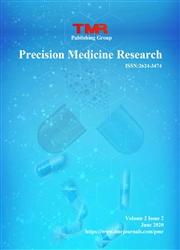To explore the mechanism of Naodesheng tablets in the treatment of atherosclerosis based on network pharmacology and bioinformatics
引用次数: 0
Abstract
Background: Naodesheng tablets (NDST) was widely used in clinical treatment as a drug for cardiovascular diseases, but the mechanism for treating atherosclerosis was unknown. On the basis of network pharmacology and bioinformatics, predict the relevant targets and signalling pathways for NDST in the treatment of atherosclerosis. Methods : First, the targets of NDST and the targets for treating atherosclerosis were looked for in different databases. Next, Venny 2.1.0 was used to find the genes that overlapped between NDST and targets for treating atherosclerosis. Subsequently, the herb-active ingredient-target-disease were obtained to explore the hub compound. Furthermore, the Metascape database was used for Gene Ontology and Kyoto Encyclopedia of Genes and Genomes enrichment analysis. And we constructed the “active ingredient-intersection target-pathway” network by Cytoscape software to gain the hub genes and pathways. Finally, molecular docking was used to verify the affinity of hub ingredients and hub genes. Results: In the results, 67 active ingredients and 322 targets of NDST were selected in ingredients-targets network. 154 overlapping targets of NDST (322) and atherosclerosis (1330) were obtained. Then, the herb-active ingredient-target-disease showed that quercetin, apigenin and luteolin were the hub ingredients to treat atherosclerosis. Further, the hub genes (PTGS2, RXRA, CASP3) and pathways (lipid and atherosclerosis) were accessed in active ingredient-intersection target-pathway. Finally, the results indicated that quercetin, apigenin and luteolin were better binding the PTGS2, RXRA, CASP3, especially PTGS2 and luteolin in molecular docking. Conclusion: In conclusion, quercetin, apigenin and luteolin, as the main ingredients of NDST could play a important role in PTGS2, RXRA, and CASP3 for treating atherosclerosis via the lipid and atherosclerosis (TNF signaling pathway).从网络药理学和生物信息学的角度探讨脑德生片治疗动脉粥样硬化的作用机制
背景:脑德生片作为一种心血管疾病的药物被广泛应用于临床治疗,但其治疗动脉粥样硬化的机制尚不清楚。基于网络药理学和生物信息学,预测NDST治疗动脉粥样硬化的相关靶点和信号通路。方法:首先,在不同的数据库中寻找NDST的靶点和治疗动脉粥样硬化的靶点。接下来,利用Venny 2.1.0寻找NDST与治疗动脉粥样硬化靶点之间重叠的基因。随后,获得草药活性成分-靶点-疾病,探索中心化合物。此外,metscape数据库用于基因本体和京都基因与基因组百科全书的富集分析。利用Cytoscape软件构建“活性成分-交叉靶点-通路”网络,获取枢纽基因和通路。最后通过分子对接验证轮毂成分与轮毂基因的亲和力。结果:在成分-靶点网络中共筛选出NDST的67种有效成分和322个靶点。获得了154个NDST(322个)和动脉粥样硬化(1330个)重叠的靶点。结果表明,槲皮素、芹菜素和木犀草素是治疗动脉粥样硬化的中心成分。此外,中心基因(PTGS2, RXRA, CASP3)和途径(脂质和动脉粥样硬化)在活性成分交叉靶点通路中被访问。最后,结果表明槲皮素、芹菜素和木犀草素在分子对接中与PTGS2、RXRA、CASP3结合较好,尤其是PTGS2与木犀草素的结合。结论:综上所述,槲皮素、芹菜素和木犀草素作为NDST的主要成分,可通过脂质和动脉粥样硬化(TNF信号通路)调控PTGS2、RXRA和CASP3,对动脉粥样硬化起到重要作用。
本文章由计算机程序翻译,如有差异,请以英文原文为准。
求助全文
约1分钟内获得全文
求助全文

 求助内容:
求助内容: 应助结果提醒方式:
应助结果提醒方式:


